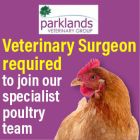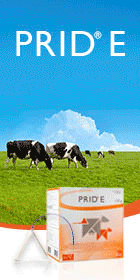UCD Research - January 2021
Research into the behaviour, health, welfare and ecology of deer in Ireland
There is a need for data on Ireland’s three wild deer species that can feed into evidence-based decisions around sustainable and best-practice deer management, to achieve sustainable long-term deer numbers. Researchers from across University College Dublin (UCD), University of Limerick (UL), the Irish Deer Commission and associates, led by Professor Pieter Brama from the School of Veterinary Medicine, UCD, have embarked on an ambitious project into the behaviour, health, welfare and ecology of this species
In association with


Ruth F Carden
Wildlife Ecological & Osteological Consultancy, Wicklow; Adjunct Research Fellow, School of Archaeology, University College Dublin.
The expert and diverse specialised team working on this project uses cutting-edge GPS telemetry technology along with detailed geospatial analysis and modelling, resulting in data on three wild deer species located across the island of Ireland. The team aims to address gaps in knowledge, with ambitious goals for data collection across several key areas, some of which are underway on certain deer populations and nearly at the analytical and modelling stages. Current, knowledge gaps on wild deer in Ireland centre on the following four key areas:
1. Wild deer movement, habitat selection and activities.
2. Health screening to determine the incidence of various parasites, viral and bacterial diseases, and general health.
3. Genetic analysis to determine levels of interbreeding between different wild deer to ascertain the purity of genetic lineages.
4. Behavioural studies.
Currently, little is known about many aspects of wild-deer ecology in Ireland. We do know the natural history, origins of all three species along with previous distributions (Ní Lamhna 1979; McDevitt et al, 2009; Carden et al, 2011; Carden et al, 2012; Belgane et al, 2018) and the degree of hybridisation between red and sika deer and their distribution (McDevitt et al, 2009; Smith et al, 2014). However, detailed census data, spatial deer-habitat relationships and up-to-date deer distribution research, which has been lacking until recently, is forthcoming by members of the team in 2021, in conjunction with the Irish Deer commission (Carden et al, in prep.). This crucial research comes at a time where there is continued concern over assumed increasing wild deer numbers nationwide and the risk of transmission of diseases (eg. bovine tuberculosis and viral pathogens) between domestic livestock and wild deer among farming and wildlife stakeholders. There are also increasing concerns over negative impacts on agricultural land, commercial forestry and semi/native woodlands.
The new research in 2021 will present census and ecological habitat relationships for the first time for Ireland’s three largest mammals – sika, fallow and red deer. New data and interpretation on deer movement behaviour and interactions of wild deer within the landscape will allow habitat suitability analysis and connectivity models to be analysed and tested. Further research is needed, but certainly the important first steps and lead in this area have been undertaken by the team.
Significant investment has been made in ‘state of the art’ darting equipment with a collection of darting rifles and dart tracking equipment being available to the team. This allows darted animals to be accurately tracked immediately after darting and removes the risk of lost darts filled with potentially dangerous drugs in the environment. When animals are fully anaesthetised extensive monitoring, biological screening and sampling is done after which sophisticated telemetry satellite GPS collars are attached (see Figure 1). This allows deer to be tracked ‘live’ every 30 minutes while moving freely and resuming normal life within the landscape, showing what way wild deer utilise different habitats and move within the landscape and for what duration (see Figure 2). Internal accelerometers are fitted inside the collars, which record 3D axis-movement data every few seconds and inform us through specialised statistical analysis precisely which behaviours the deer are performing (eg. sleeping, eating, running, etc).
Of particular interest, are daily and seasonal movements (see Figure 3); how much time is spent in habitats, how are habitats used and hotspots of deer crossings along major roads. Such data can feed into habitat and traffic management modelling. Location data and time spent also indicate where wild deer and domestic livestock may interact, which has implications for the transmission of diseases especially when the health status of the deer is known.
At present, there is a baseline of testing completed on the prevalence of several viral pathogens that affect livestock in wild deer nationwide (BVDV, BoHV-1, Schmallenberg virus, blue tongue virus; Graham et al, 2017). Continued testing of wild deer by the Department of Agriculture, Food and the Marine is in progress on the team’s study sites and will be expanded to study sites nationwide.
In association with


Ruth F Carden
Wildlife Ecological & Osteological Consultancy, Wicklow; Adjunct Research Fellow, School of Archaeology, University College Dublin.

Figure 1: Attaching a telemetry collar, sampling and monitoring of anaesthetised red deer.

Figure 2: A red deer hind participating in the pilot project with a satellite GPS telemetry collar on its neck. These collars do not impede regular movement of the deer and drop off automatically at the set end date.
There is an increasing and vocal concern expressed by members of the Irish Farming Association and associated stakeholders on the potential of wild deer to transmit bovine tuberculosis to their livestock as well as on deer overgrazing on grass pastures, early in the spring before cattle are put out after overwintering in sheds. At present, there is no knowledge about the competition as well as the interactions between wild deer species with domestic livestock on grazing pastures. Health screening in wild deer populations is underway in limited localised areas, including some of the study’s sites.
Movement behaviour, in conjunction with habitat selection and usage, together with genetic and other health aspects, including population parameters, are crucial data needed to build reliable deer-population distribution and dynamic models. Robust deer population size estimates derived from organised census surveys may be used in deer-population modelling simulations to predict deer numbers going forward. There is a requirement to fully integrate all these data into meaningful and productive deer management strategies to establish sustainable deer numbers in balance with their environment in Ireland.
GPS data and behavioural observations studies will be combined, associating deer behaviour with major life events such as mating and birth, along with natural disasters/changes (eg. fires, habitat loss, etc.). Data on time spent by deer doing various activities (eg. time spent feeding) in relation to human disturbance can verify if humans affect deer behaviour (eg. recreational activities, deer hunting, etc.).

Figure 3: Merged kernel density of deer locations based on 72,000 GPS fixes. The hotspots of highest density reflect greater frequency of deer at those locations.
Members of the team, in conjunction with members of the Irish Deer Commission, have already started annual (and in the future will perform five-year-) census and distribution surveys. Before these surveys were instigated (at the start of 2019/20 deer culling season), there had been no organised census carried out on wild deer species in Ireland.
Localised population estimates have been attempted but these are at best ‘guesstimates’ and do not rely on any population modelling simulations. National Parks and Wildlife Service do collect the number of culled deer (per species and by sex) from deer hunters, however, these cannot be independently verified, and it is known that some deer hunters do not return accurate figures in fear they lose their annual deer hunting licence. At best, these numbers can give an overall trend, and that trend suggests that the deer numbers are increasing year to year in Ireland. The group will be investigating and modelling the annual (and five-yearly) census data to determine how effective the culling is on controlling deer numbers.
There is little actual sustainable deer management being practised in Ireland, although there are some localised efforts underway. Still, a holistic approach to sustainable deer management, intertwined with environmental management, is required – an ecosystem approach with rate of carbon sequestration being accounted given Ireland’s goal of going carbon neutral by 2050.
An initial pilot phase of this landmark project is nearing completion with statistical analysis and modelling of the collected data scheduled in 2021, followed by the submission of several peer-reviewed papers targeting suitable high impact journals. Further data collection is planned over the coming years in selected locations – public and private lands – across Ireland.
Co-authors
- Pieter AJ Brama, School of Veterinary Medicine, University College Dublin
- Margot C Labberté: School of Veterinary Medicine, University College Dublin.
- Clodagh M Kearney: School of Veterinary Medicine, University College Dublin.
- Annetta Zintl: School of Veterinary Medicine, University College Dublin.
- Paul A Walsh: East Coast Hunting and Shooting, Gorey Business Park, Gorey, Co. Wexford.
- David Dillon: Devenish Nutrition, Dowth Hall, Dowth, Co. Meath.
- James Sweeney: Department of Mathematics and Statistics, University of Limerick.
Acknowledgements:
We gratefully thank UCD Foundations, UCD Consultancy and Devenish Nutrition for funding the initial phases of the project.
- Beglane F, Baker K, Carden RF, Hoelzel AR, Lamb A, Mhig Fhionnghaile R, Miller H, Sykes N (2018) Ireland’s fallow deer: their historical, archaeological and biomolecular records. Proceedings of the Royal Irish Academy – Section C
- Carden RF, Carlin CM, Marnell F, McElholm D, Hetherington J, Gammell MP (2011) Distribution and range expansion of deer in Ireland. Mammal Review 41: 313-325.
- Carden RF, McDevitt AD, Zachos FE, Woodman PC, O'Toole P, Rose H, Monaghan NT,
- Campana MG, Bradley DG, Edwards CJ (2012) Phylogeographic, ancient DNA, fossil and morphometric analyses reveal ancient and modern introductions of a large mammal: the complex case of red deer (Cervus elaphus) in Ireland. Quaternary Science Reviews 42: 74-84.
- Graham DA, Gallagher C, Carden RF, Lozano J-M, Moriarty J, O’Neill R (2017) A survey of free-ranging deer in Ireland for serological evidence of exposure to bovine viral diarrhoea virus, bovine virus-1, blue tongue virus and Schmallenberg virus. Irish Veterinary Journal 70: 1-11.
- McDevitt AD, Edwards CJ, O'Toole P, O'Sullivan P, O'Reilly C, Carden RF (2009) Genetic structure of, and hybridisation between, red (Cervus elaphus) and sika (Cervus nippon) deer in Ireland. Mammalian Biology 74: 263-273.
- Smith SL, Carden RF, Coad B, Burkitt T, Pemberton JM (2014) A survey of the hybridisation status of Cervus deer species on the island of Ireland. Conservation Genetics 15: 823-835.









